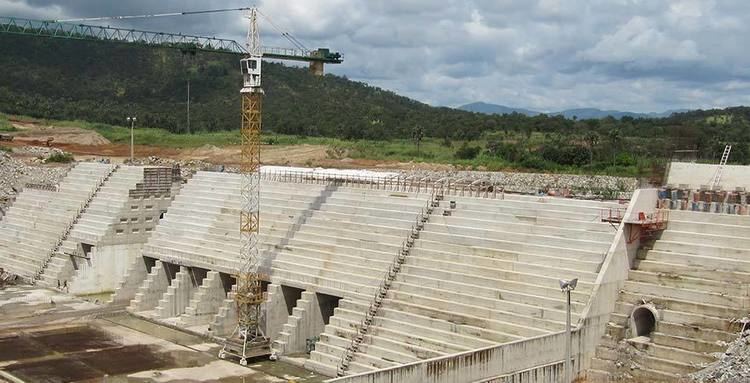 | ||
Mambilla Power Station, one of Africa's (and Nigeria's) biggest dam projects, is a projected hydro power plant which will be connected to three dams across the Donga River in Taraba State, Nigeria.
Conceived in 1982, the main Mambilla Dam is a large rolled compact concrete dam and reservoir at 1,300 metres (4,300 ft) above sea level. From this dam water is diverted off the reservoir towards the western side of the plateau through 3 hydraulic tunnels totaling 33 kilometres (21 mi), intercepted by 2 smaller dams (Sum Sum Dam and Nghu Dam), both at an elevation of 1,250 metres (4,100 ft). Beyond these dams, the tunnels lead into a 1,000 metres (3,300 ft) drop shaft tunneled down through the rock to a massive underground powerhouse with a generating capacity of 3,050 megawatts (4,090,000 hp). Via a short tunnel, the water then exits the base of the plateau and flows into a tributary river that rejoins the Donga River downstream of the plateau.
On November 7, 2012 Nigeria signed a memorandum of understanding with China's Sinohydro Corp. to build Mambilla Power Station. Completion of the project is expected in 2018, and it is expected to multiply Nigeria's generating capacity considerably.
In December 2013, the Nigerian federal ministry of Power has released a statement that the contract with Sinohydro, has been cancelled, while the ministry is currently working on firming the project cost and that an ongoing discussion has been opened with Chinese EPC firms, interested in providing funding for the project.
